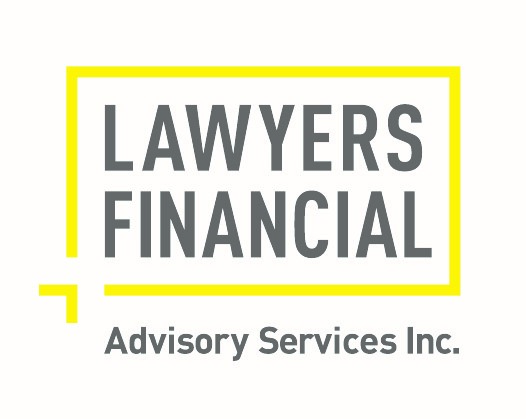
Rotten Tomatoes is an online aggregator of film reviews. When a film gets enough professional reviews, it gets a ranking, up to 100 on the “Tomatometer.”
You might be surprised to learn that the highest-ranked film on Rotten Tomatoes is Leave No Trace. It received a 100% score based on 251 reviews. Haven’t seen it? You’re not alone. It made nowhere near the $3B US that Avatar raked in after scoring a much more tepid 82%.
So, Leave No Trace is a great film in the hearts and minds of critics, but if you were a movie producer, would you stake your life savings on it?
And there’s the rub. The most critically acclaimed films aren't always the most profitable. The same can be said for investing in worthy companies: a company can have exceptional environmental, social and governance (ESG) scores, but still be the wrong investment for you if:
- It doesn’t match your time horizon. If it’s a relatively new company, its solution to a problem might still be decades away from scaling up.
- It’s outside your risk tolerance. There’s a chance it will be eclipsed by a yet-to-be-discovered competitor.
- It doesn’t fit within your current asset mix. Maybe it’s an equity investment, and your portfolio is built upon fixed-income solutions.
That’s why every investment decision must balance two sets of numbers—financial on one hand and ESG on the other.
The good news is there’s evidence to suggest that high ESG scores often correlate with good management. And good management often leads to solid investment potential. But that’s still far from the whole story because ESG ratings aren’t a substitute for the financial information analysts use to value corporations, predict growth, and determine risk.
ESG scores are somewhat subjective, and that presents challenges for people who prefer hard facts over opinions (lawyers, for example).
So is ESG a science, some kind of Rotten Tomatoes rating for investment enthusiasts, or something in between? To answer this question, we look at what isn’t working so far, what is working, and why the best days for ESG investing are probably ahead for anyone who knows how to make sense of the scores.
WHAT’S NOT WORKING (YET)
ESG scores are somewhat subjective, and that presents challenges for people who prefer hard facts over opinions (lawyers, for example). Every investor should acknowledge and accept three current limitations of ESG.
1. It’s complicated
KPMG refers to the long-term implications of today's ESG choices as "fat-tailed, far-off risks that are hard to model statistically, for lack of historical precedence.”1 Meaning, we may never know the consequences of the trade-offs that companies make in order to generate a good ESG score. For example, closing a factory can be good for the environment (E) but bad for the local economy (S). It could take decades to observe the full effect of the decision.
2. It’s not consistent
The Economist magazine recently suggested, “ESG has a measurement problem: the various scoring systems have gaping inconsistencies and are easily gamed.”
Accounting firms worldwide benefit from long-standing traditions and practices summarized by the International Accounting Standards Board (IASB). Until 2021, there was no such standardization for ESG reporting agencies.
That changed with the launch of the International Sustainability Standards Board (ISSB). According to its website, its mission is to deliver a comprehensive global baseline of sustainability-related disclosure standards. That's good news for anyone who cares about ESG scores, but these are early days.
3. It has a limited reach
Publicly traded companies get rated but private ones have a choice. That sounds okay, except that 83% of Canadians work for small and medium sized enterprises of the sort that don’t have to be ESG-rated. A private corporation, such as one supplying car parts to an auto manufacturer, might choose to be rated in the hope that a good score will help them land contracts or enhance their reputation. Either way, it remains voluntary for private firms.
With all these challenges, ESG rating systems may never achieve the same level of consistency as financial reporting standards. They may continue to be something closer to a movie review than an auditor’s report.
But that’s not entirely bad news.
SO, WHAT IS WORKING?
Roland Sakha, Chief Investment Officer, Global Private Wealth at Fiera Capital—Lawyers Financial’s Private Wealth partner— acknowledges the limitations of ESG scores but is optimistic about what’s working:
“The greatest thing to come out of responsible investing and ESG movements so far is that we’re having discussions about things that weren’t talked about 20 or 30 years ago. By talking about ESG risks, we’re advancing the conversation about social responsibility and innovation. Indirectly, that’s how ESG is going to help us address global issues. And that’s good news for everyone.”
Senior Investment Counsellor at Fiera Capital, Paul de la Roche, echoes Sakha’s optimism about the future of ESG decision-making:
“When a client expresses the will to make responsible investments, we can work with them to fine-tune a portfolio to meet very specific goals. That can be as simple as choosing a passively managed ESG mutual fund or as detailed as applying complex filters to every decision. ESG data lets us offer greater personalization based on a client’s desire to be a more responsible investor.”
ADD ESG TO YOUR PORTFOLIO IN A THOUGHTFUL, MEASURED WAY
For investors who want to use ESG scores to build responsible financial plans, the team at Fiera Capital has some good advice.
1. Stick to the basics
Before adding any type of ESG investment to your financial plan, ensure that it meets your Investment Policy Statement (IPS) requirements. With so many options for mutual funds and exchange-traded funds (ETFs), this gets easier every day. A smart investment lines up with your goals, time horizon, and risk tolerance.
If it’s been a while since you updated your IPS, consider reviewing your goals with your financial advisor and discussing how to incorporate ESG strategies.
2. Pick the right ESG investments
Not all ESG investment options are created the same way. Some may lean more toward sectors, regions, or types of technology. Others actively exclude specific types of investments, such as weapons.
Some seek to invest capital in companies that have good long-term prospects for making an impact on the world (impact investing) but may not be right for short-term goals such as generating income. Work with your advisor to make sure the investments you choose complement the rest of your portfolio to keep your overall asset mix aligned with your goals.
3. Set your expectations
De la Roche encourages clients to set their expectations when it comes to balancing investment performance with financial results. “Many socially motivated investors respect that change takes time and they set realistic goals based on what they hope to achieve as an investor and as a supporter of ethical decision making.”
We can help.
Invest purposefully with help from your wealth team at Lawyers Financial. CBIA/Lawyers Financial is a not-for-profit organization that offers free financial planning to every member of Canada’s legal community. Start with a 30-minute conversation about your needs, goals, and expectations, and we’ll help you get started.
Sources: 1. KPMG, “Sustainable investing: fast-forwarding its evolution,” 2020.


